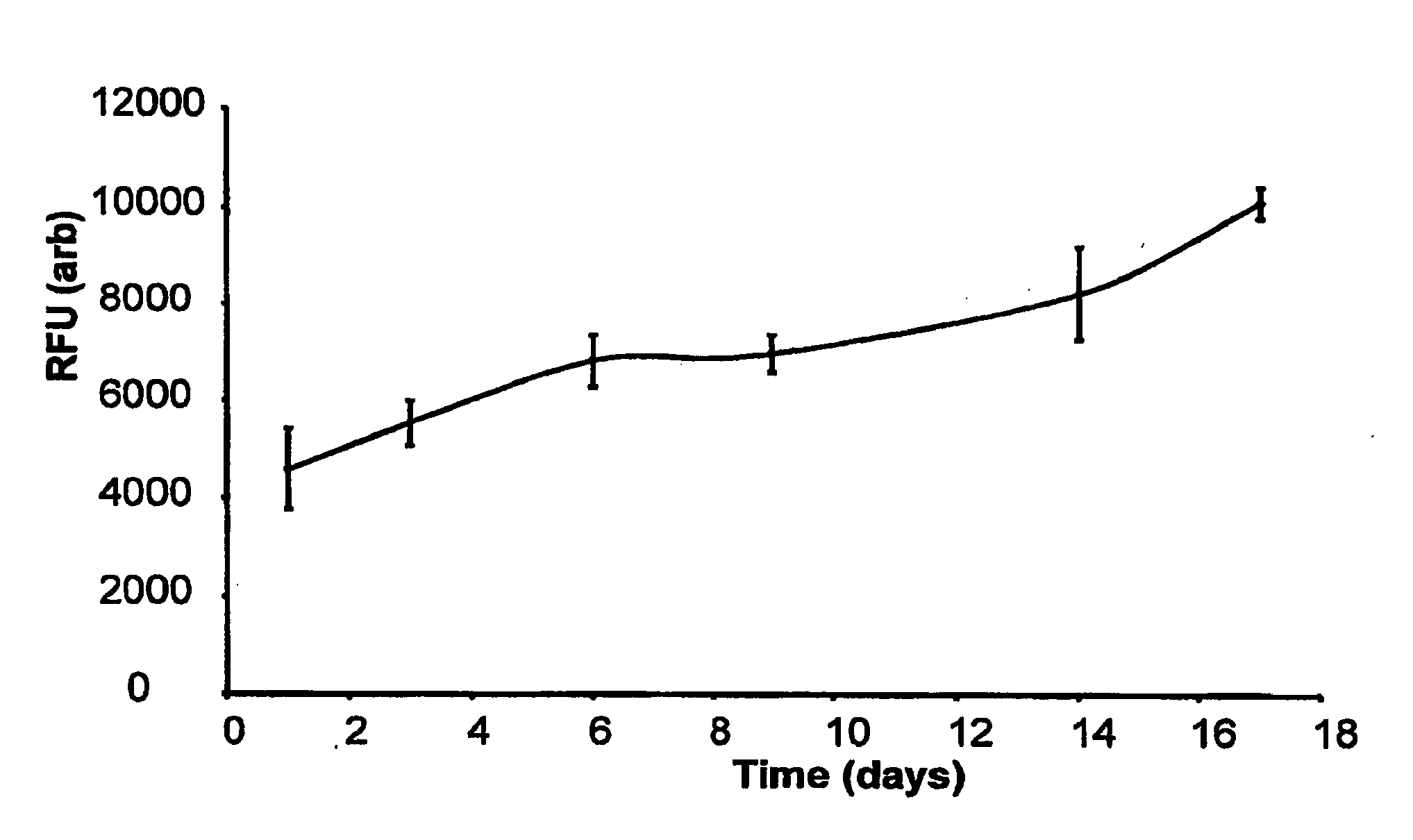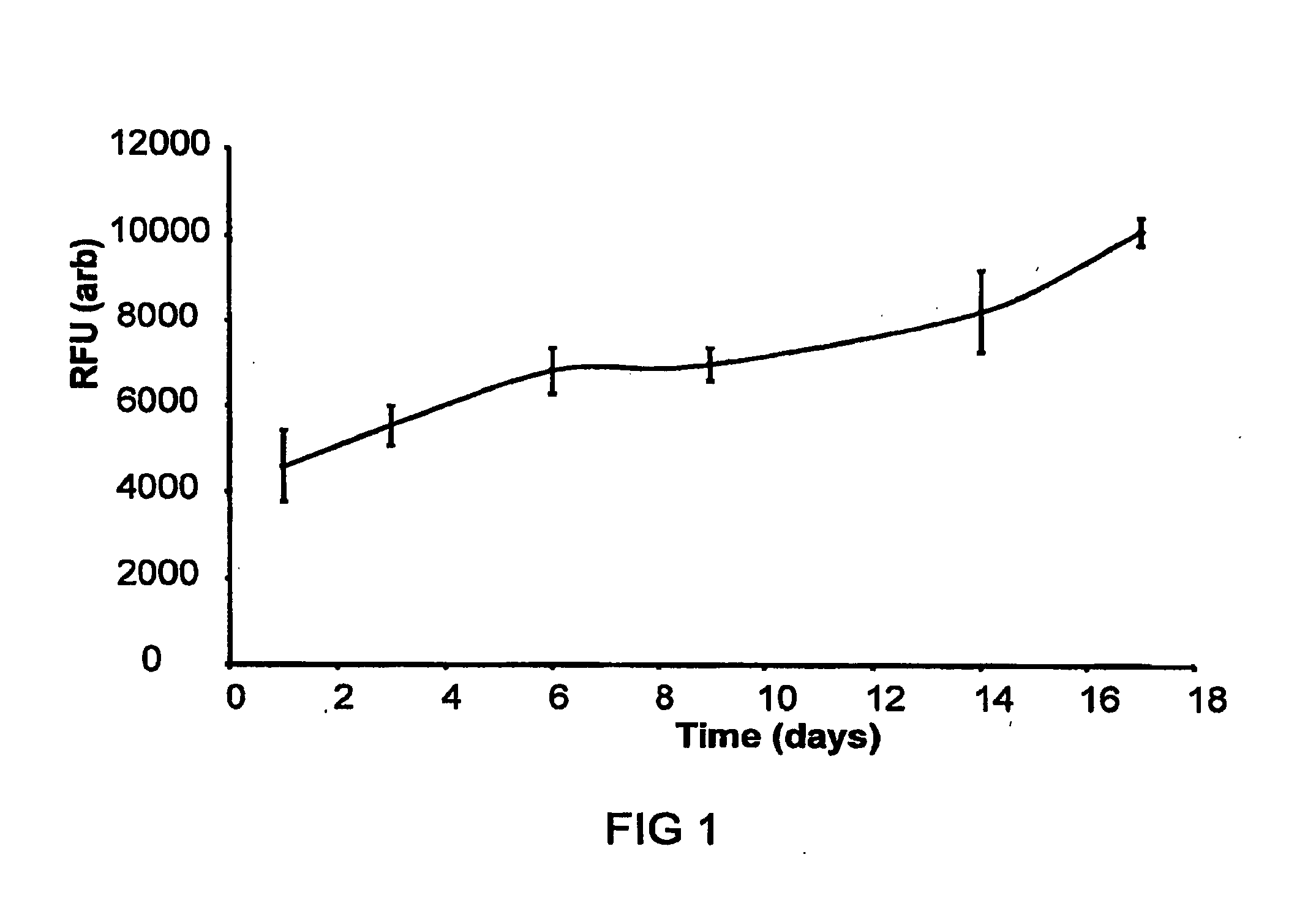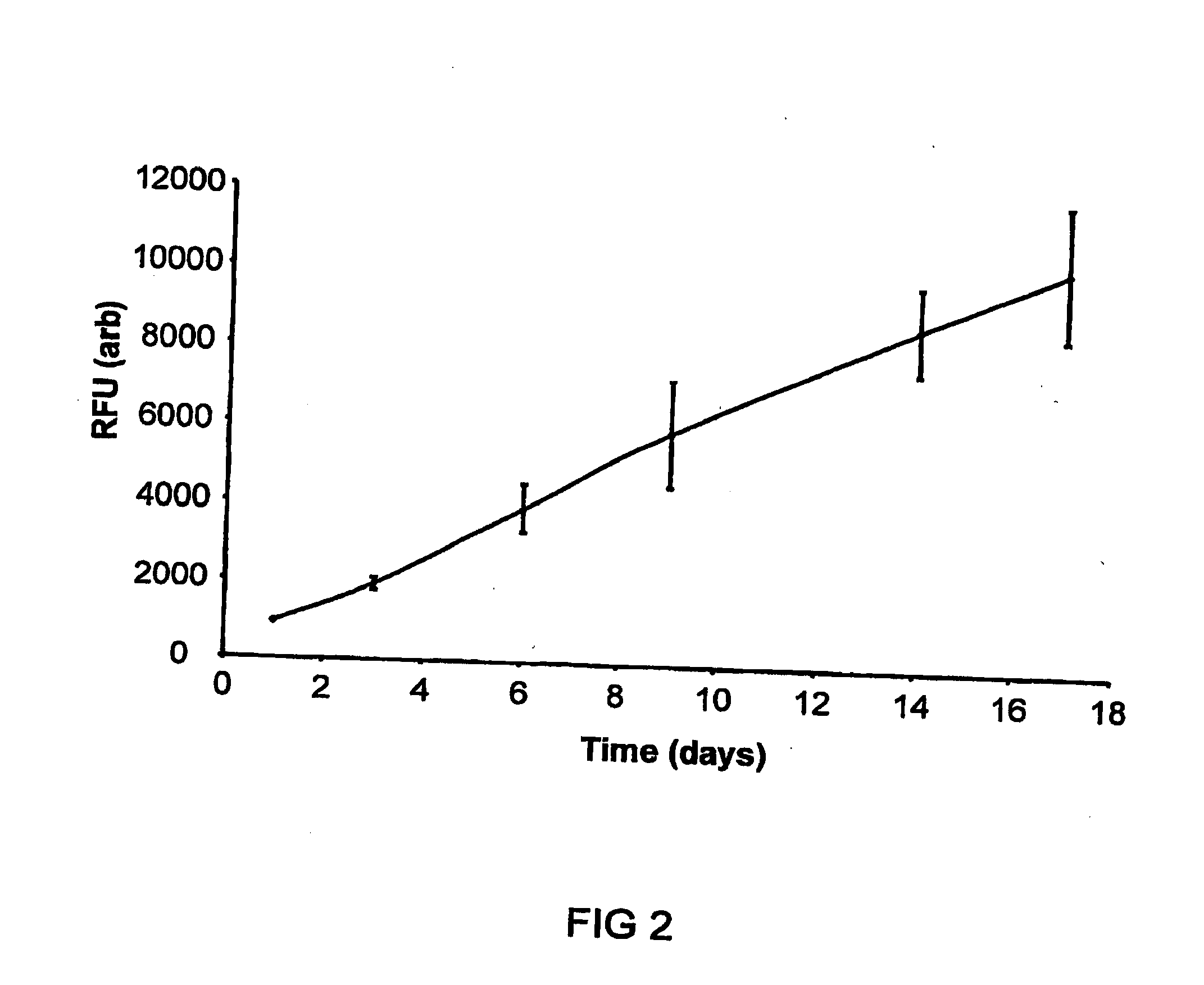Porous Matrix
a porous matrix and matrix technology, applied in the field of porous matrix, can solve the problems of inadequate diffusion, poor diffusion properties, and failure of treatmen
- Summary
- Abstract
- Description
- Claims
- Application Information
AI Technical Summary
Benefits of technology
Problems solved by technology
Method used
Image
Examples
example 1
Cross-Linking via Temperature Triggered Solidification
[0052]In this example, the first phase comprises poly (ethylene glycol) / poly (DL-Lactide) blend particles (10 wt % polyethylene glycol) and the second phase comprises porous poly (DL-Lactide) particles manufactured by conventional particulate leaching methods. The two components are mixed together (at a range of ratios between 20:80 and 80:20) and then heated to 60° C. to produce a malleable material, which is shaped by the surgeon and applied to the defect site. In this example the first phase does not fully liquefy but becomes a ‘tacky’ semi-solid at the processing temperature (above the polymers glass transition temperature). In another example, the first phase (of a different polymer blend composition) may be fully liquefied (above the polymers melting transition) at 40-60° C., upon which porous particles of the second phase are mixed together with the still liquid first phase. The material is then shaped and applied to the d...
example 1a
Temperature Triggered Solidification
[0053]Further examples of polymer blend compositions, their glass transition temperatures (measured using differential scanning calorimetry) and crosslinking temperatures are shown in the table below.
GlassCrosslinkingTransitionTemperatureMaterialTemperature (° C.)(° C.)PDLLA4875-80°C.15% PEG3400 / PDLLA2355-65°C.20% Poly (caprolactone diol530) / 2350-55°C.PDLLA15% PEG400 / PDLLA1545°C.20% PEG1000 / PDLLA837-40°C.10% DL-Lactide / PDLLA4665-70°C.PLGA4370°C.15% PEG1000 / PLGA1637-40°C.
example 1b
Temperature Triggered Crosslinking with Cell Seeding
[0054]Melt blends were manufactured by heating components (1.7 g PLGA, 0.3 g PEG1000) on a ceramic tile placed on a hotplate and physically mixing components in the melt state. The material was cooled, removed from the tile, and immediately cut and ground after cooling in liquid nitrogen. The ground blends were stored in a vacuum desicator prior to use. Glass transition temperatures were measured using differential scanning calorimetry with the temperature being taken from the midpoint of the transition region. The glass transition temperature of PLGA was measured at 43° C. and that of the blend at 16° C.
[0055]Cell growth in static culture was measured upon scaffolds (triplicate repeats) seeded with human dermal fibroblasts (and cell free controls). Ground blend material (80 mgs of 15% PEG1000 / 5050DL ground blend) was pre-sintered in a 6 mm PDMS mould at 37° C. for 15 minutes. A cell suspension was then added to the material (5×105...
PUM
| Property | Measurement | Unit |
|---|---|---|
| porosity | aaaaa | aaaaa |
| molecular weights | aaaaa | aaaaa |
| porosity | aaaaa | aaaaa |
Abstract
Description
Claims
Application Information
 Login to View More
Login to View More - R&D
- Intellectual Property
- Life Sciences
- Materials
- Tech Scout
- Unparalleled Data Quality
- Higher Quality Content
- 60% Fewer Hallucinations
Browse by: Latest US Patents, China's latest patents, Technical Efficacy Thesaurus, Application Domain, Technology Topic, Popular Technical Reports.
© 2025 PatSnap. All rights reserved.Legal|Privacy policy|Modern Slavery Act Transparency Statement|Sitemap|About US| Contact US: help@patsnap.com



